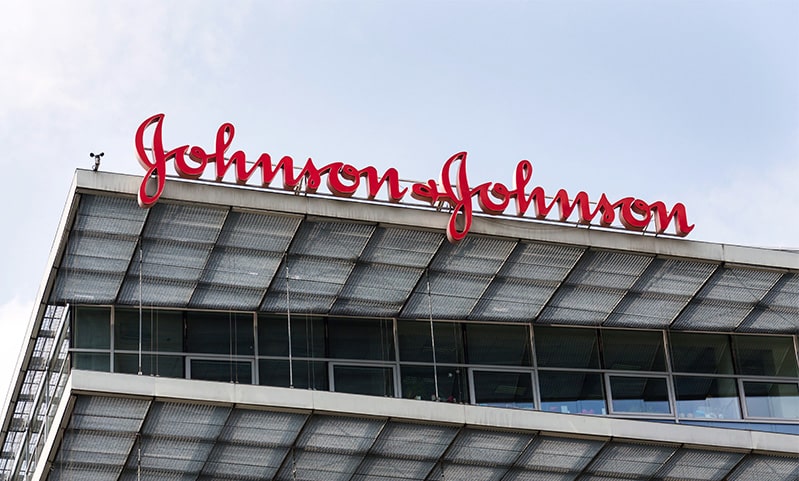A Philadelphia jury ordered Johnson & Johnson subsidiary Janssen Pharmaceuticals to pay $8 billion in a drug-induced gynecomastia matter.
26-year-old Nicholas Murray developed abnormally large breasts in 2003. He had been taking Risperdal, an antipsychotic drug, to control his autism spectrum disorder symptoms.
In a statement, J&J said it would appeal the “grossly disproportionate” award. There are thousands of other Risperdal/gynecomastia cases pending in Pennsylvania and around the country.
Johnson & Johnson faces a number of other legal woes as well.
In August, an Oklahoma federal judge ordered the company to pay over $550 million as a penalty for its “false and dangerous” opioid painkiller sales campaign.
Victims of J&J’s asbestos-laced talcum powder products have obtained a number of favorable, multimillion-dollar verdicts as well.
Risperdal, Gynecomastia, and Potential Side-Effects
Risperidone (Risperdal) is one of many medicines linked to drug-induced gynecomastia. Risperdal is a second-generation, or atypical, antipsychotic.
The Food and Drug Administration approved Risperdal for limited treatment of extreme schizophrenia patients. But as outlined below, doctors prescribe this drug for a number of other uses as well.
Atypical antipsychotics appeared in the 1990s as a response to typical antipsychotics.
Thorazine, Loxatane, and other antipsychotic drugs synthesized in the 1950s were relatively effective, but they had some rather nasty psychotic side-effects.
Risperdal and its ilk essentially block serotonin receptors in the brain, thus increasing the amount of dopamine. The hormonal imbalance affects the body as well as the brain.
Pregnancy hormones cause womens’ breasts to change, and artificial hormones also cause men’s breasts to change.
Gynecomastia side-effects include intense chest pain and a 500 percent increased risk of breast cancer.
This condition also has profound social and emotional effects, especially on younger men and boys.
Almost as soon as the drug hit the market, both the FDA and Johnson & Johnson began fielding reports about the link between Risperdal overuse and gynecomastia.
Yet J&J refused to pull Risperdal off the shelves or even issue stronger warnings.
Off-Label Use
Manufacturers only issue warnings or recall products in extreme circumstances.
The economic pressures are just too great.
According to some estimates, the cost to bring a new drug to market may be over $2.5 billion.
Manufacturers like Johnson & Johnson must sell a lot of pills in a very short amount of time to recoup these costs and show a healthy profit.
After just a few years, less-expensive generic equivalents become available, so demand drops for the pricey original.
As a result, manufacturers do not just avoid actions, like stern warning labels, which may limit product sales.
They often encourage doctors to use pharmaceutical products in ways that the FDA has not technically approved.
Risperdal is a good example. Since it is a serotonin blocker, doctors prescribed it for a wide range of mental disorders.
Note that doctors diagnosed the victim in the above case with autism spectrum disorder, a condition which is normally not severe and often barely noticeable.
So, victims took this powerful, hormone-altering drug when something weaker probably would have sufficed.
Do you see where we’re going with this? Risperdal usually does not cause gynecomastia unless it is overused.
That’s exactly what happened in this instance.
Your Claim for Damages
Legally, manufacturers like Johnson & Johnson are strictly liable for the damages their defective products cause.
In New York, it is easier to establish this causal link than in some other states. New York courts use a more relaxed, victim-friendly standard to evaluate doctors and other expert witnesses.
Juries make stratospheric damage awards in some of these cases because of punitive damages. Negligence, or lack thereof, is not relevant when it comes to the victim’s economic injuries, like medical bills, or noneconomic injuries, like pain and suffering.
But negligence, and recklessness in this case, is relevant on the question of punitive damages.
If the company clearly put profits before people, jurors usually respond accordingly.
Admittedly, a higher court will probably reduce this amount on appeal. But even if the damage award is cut in half, $4 billion is still an awful lot of money.
Procedurally, dangerous drug claims often go to central locations for pretrial purposes. Multidistrict Litigation greatly benefits plaintiffs.
The victims pool their resources against the pharmaceutical company. And, when one case settles, it often triggers a domino effect.
If a particular case does not settle out of court, it usually goes back to its home jurisdiction for trial.
The catch in all this is that an attorney must have substantial resources, and substantial experience, to obtain maximum compensation in dangerous drug cases.
At Napoli Shkolnik PLLC, our experienced New York personal injury attorneys have those credentials. Contact us now for a free consultation.
